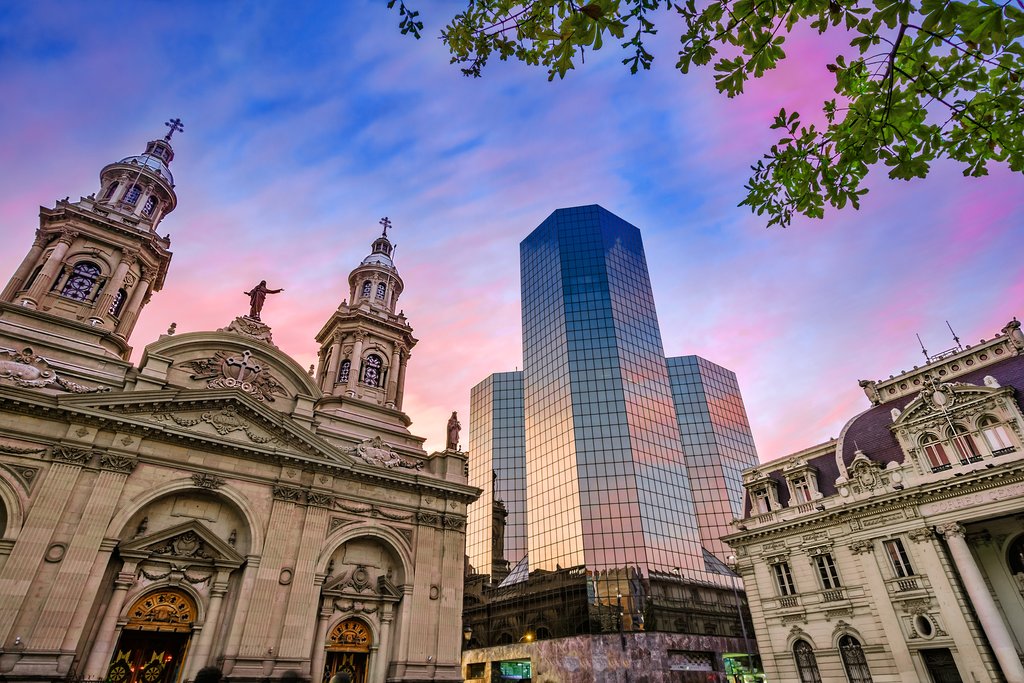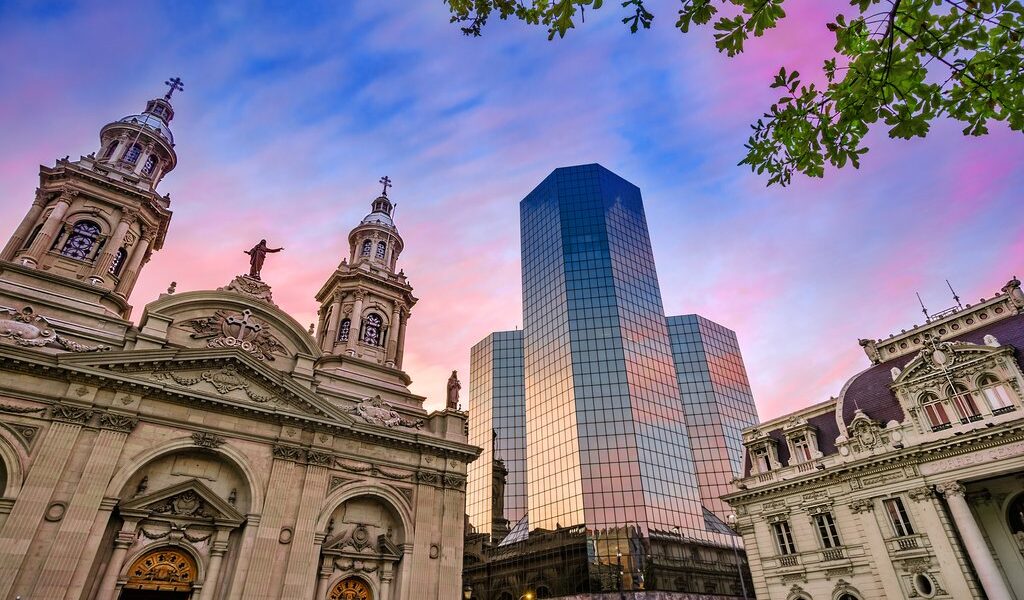
Chile’s capital is located right in the center of this long, thin country, midway between the Andes and the Pacific Ocean. Although it doesn’t yet have the glitzy reputation of Rio de Janeiro or Buenos Aires, Santiago is firmly on the up, with a host of attractions, thriving culinary and creative scenes, and world-class ski resorts within easy reach.
## Santiago: A Deep Dive into Chile’s Dynamic Capital
With a sprawling metropolitan area encompassing over 7.2 million residents, Santiago stands as the undisputed heart of Chile. For countless travelers, it serves as the initial gateway to exploring this captivating South American nation. This vibrant political, economic, and cultural epicenter boasts a rich history, tracing its origins back to 1541 when it was established by the Spanish conquistador Pedro de Valdivia. Despite facing numerous challenges, including persistent attacks from the indigenous population and the devastating impact of recurring earthquakes, Santiago steadily evolved into a pivotal trading hub.
However, the city’s true ascendancy began after Chile secured its hard-won independence in 1818. This momentous event triggered a period of significant population growth and spurred the government to embark on an ambitious building program. Remarkably, many of the architectural marvels erected during this transformative era still grace the city’s landscape, including the magnificent Teatro Municipal (Municipal Theatre), a testament to Santiago’s enduring heritage. The city continued its expansion throughout the twentieth century, experiencing an economic boom following the end of the Pinochet dictatorship in 1990. This period witnessed the rapid emergence of towering skyscrapers, transforming the city’s skyline. Among these architectural feats, the Gran Torre Santiago, the tallest building in all of South America, stands as a prominent symbol of Santiago’s modern ambition.
Today, Santiago presents itself as an impressive and forward-thinking metropolis, seamlessly blending its historical roots with contemporary aspirations. Its strategic location and diverse offerings make it the perfect starting point for embarking on an unforgettable Chilean adventure.
## Crafting Your Santiago Experience: A Guide to Planning Your Visit
To fully immerse yourself in the vibrant atmosphere of Santiago, it is recommended that you allocate at least three days to explore its main attractions and delve into its thriving dining and nightlife scenes. A more leisurely five-day stay would allow for a deeper exploration, offering the opportunity to discover hidden gems and even venture on a side trip to one of the nearby ski resorts or renowned vineyards. Santiago’s convenient location also makes it easy to incorporate into a broader exploration of Chile. A carefully crafted nine-day itinerary could encompass visits to the charming coastal city of Valparaíso, the elegant Viña del Mar, and the otherworldly landscapes of San Pedro de Atacama. For a more extensive adventure, a 14-day tour could take you on an unforgettable journey from the arid beauty of San Pedro de Atacama in the north to the breathtaking landscapes of Torres del Paine National Park in the south.
For most nationalities, tourist visas are readily available upon arrival at the airport, typically granting a stay of up to 90 days. However, it’s important to note that certain nationalities, such as Canadians and Australians, may be required to pay a “reciprocity fee,” a type of arrival tax designed to mirror the fees charged to Chilean travelers visiting those respective countries. Fortunately, Chile is free from malaria and yellow fever, and no specific vaccinations are mandatory for visitors. Furthermore, the tap water in Santiago is considered safe for consumption.
Navigating the city’s financial landscape is relatively straightforward, with numerous banks and ATMs located throughout Santiago. Additionally, currency exchange services are widely available in the city center. Credit and debit cards are generally accepted in most establishments, adding to the convenience of your trip.
### Weather Considerations
Santiago enjoys a year-round appeal, largely escaping the extreme temperature fluctuations experienced in the northern and southern regions of Chile. During the summer months, from December to March, temperatures typically range from a pleasant 50°F (10°C) to a warm 84°F (29°C). Winter, spanning from June to September, sees highs of around 66°F (19°C) and lows of approximately 41°F (5°C). Rainfall is generally scarce during the summer, but the period from May to August can be somewhat wetter.
### Navigating Arrival and Departure
The modern and efficient Arturo Merino Benítez airport, also known as Pudahuel, is situated approximately 16 miles (25km) northwest of Santiago. Convenient transportation options, including taxis, transfer services, and buses, are readily available to facilitate travel to and from the city center. The airport offers frequent flights to various destinations within Chile, as well as regular connections to major cities across South America, North America, and Europe. LATAM serves as the primary airline in Chile, while Sky Airline, although smaller, often provides more budget-friendly options. For travelers preferring ground transportation, long-distance buses connect Santiago with towns and cities throughout the country, and even extend to Mendoza in neighboring Argentina.
### Exploring Santiago: Transportation Options
The heart of Santiago is easily navigated on foot, allowing you to fully appreciate its architectural charm and vibrant atmosphere. However, for longer distances, the city boasts an excellent metro system. To utilize this efficient mode of transport, you’ll need to acquire a Tarjeta Bip! swipe card, which can be easily topped up with credit. These cards are also compatible with the city’s extensive local bus network, providing access to virtually any destination you desire. While the bus system is comprehensive, it can be more challenging to navigate compared to the metro. Taxis are readily available and easy to hail throughout the city, and ride-sharing services like Uber also operate in Santiago.
## Unveiling Santiago’s Allure: Highlights and Activities
Santiago presents a captivating blend of historical landmarks and modern neighborhoods, thought-provoking museums and pulsating nightlife, serene parks and bustling markets, ensuring there’s something to captivate every traveler. The city also serves as an excellent springboard for excursions into the surrounding countryside, home to some of South America’s premier ski resorts.
### Plaza de Armas: The Heart of Santiago
Encircling the Plaza de Armas, Santiago’s central square, are an array of colonial-era buildings, including the imposing cathedral and the historic main post office. Shaded by towering palm and eucalyptus trees, this vibrant square serves as a bustling hub of activity throughout the day and evening. Here, you’ll encounter groups of schoolchildren, intense chess matches, shoe shiners, stray dogs, pensioners, young couples, street performers, newspaper vendors, preachers, and a myriad of other colorful characters, each contributing to the square’s unique atmosphere.
### Palacio de la Moneda: A Neoclassical Masterpiece
Located just off the Alameda, Santiago’s main thoroughfare, the Palacio de la Moneda is the city’s most iconic building. Completed in 1805, this grand Neoclassical structure served as the presidential palace until 1958, before becoming the official seat of government. Free guided tours are available, but advance booking is required. Directly south of the palace, beneath a plaza, lies the La Moneda Cultural Centre, an art gallery, exhibition space, and cinema showcasing a diverse range of cultural expressions.
### Chilean Museum of Pre-Colombian Art: A Journey Through Ancient Civilizations
Considered one of Chile’s finest museums, the Chilean Museum of Pre-Colombian Art is dedicated to showcasing the diverse arts, crafts, jewelry, and iconography produced by Latin America’s indigenous peoples during the 10,000 years preceding the arrival of Christopher Columbus. Among the museum’s many highlights are the evocative Mayan bas-reliefs, intricately carved wooden Easter Island statues, and shimmering Aymara silverware.
### Cerro San Cristóbal: Panoramic Views and Recreational Delights
On a clear, sunny day, the views from the summit of Cerro San Cristóbal, a prominent hill in the Bellavista district, are simply breathtaking. Accessible via cable car or funicular railway, the summit features a park, gardens, public swimming pools, and a zoo, offering a variety of recreational activities for visitors of all ages.
### Museum of Memory and Human Rights: Remembering the Past
Located adjacent to Quinta Normal Park, the Museum of Memory and Human Rights serves as a poignant tribute to the victims of the oppressive Pinochet dictatorship. Under this regime, more than 3,000 people were “disappeared,” and thousands more were subjected to torture, detention, or exile. The museum’s well-curated exhibits utilize first-hand testimonies, photos, video and audio footage, poetry, artworks, and literature to recount this dark chapter in Chilean history.
### Skiing and Snowboarding: Winter Adventures in the Andes
Santiago’s proximity to the Andes Mountains makes it a prime location for accessing some of South America’s best winter sports resorts. Within a two-hour drive, you can reach renowned destinations such as Portillo, Valle Nevado, El Colorado, and La Parva. The ski season typically runs from mid-June to October, offering ample opportunities for skiing and snowboarding enthusiasts.
### Festivals and Special Events: Celebrating Chilean Culture
Easter (Semana Santa) is a significant celebration in Santiago, as it is throughout Chile. Independence Day (18 September) is another major national holiday, marked by lively street parties and patriotic displays. The city also hosts Chile’s largest LGBTI celebrations in June, culminating in a vibrant Pride Parade. Additionally, the Santiago International Film Festival takes place in August, showcasing a diverse selection of films from around the world.
## Santiago’s Culinary and Accommodation Scene
Santiago offers a diverse range of lodging and dining options, catering to various tastes and budgets.
### Accommodation Choices
The leafy Providencia neighborhood features a selection of excellent mid-range accommodations. Vilafranca Petit Hotel is a charming B&B situated in a tranquil area, while Orly Boutique Hotel & Suites offers spacious and well-equipped rooms. For those seeking a central location, Hotel Vegas provides a collection of good-value rooms and apartments.
For a more luxurious experience, The Aubrey is spread across a pair of beautifully restored mansions in Bellavista, boasting impeccable service, a swimming pool, and a delightful restaurant. In the Lastarria neighborhood, Luciano K is an elegant Art Deco hotel with a stunning roof terrace.
### Culinary Delights
Santiago boasts a vibrant culinary scene, with options to satisfy every palate and budget. A visit to one of the numerous seafood restaurants at the Mercado Central (Central Market) and the neighboring Feria Municipal La Vega (La Vega Municipal Fair) is a must for seafood lovers. For hearty, meat-focused Chilean classics, head to El Caramaño in Bellavista, El Hoyo near the Central Station, or Liguria in Providencia.
Las Vacas Gordas in Barrio Brasil serves delectable steaks, while Le Flaubert is a chic French bistro in Providencia. For a more contemporary take on Chilean cuisine, Boragó has earned continent-wide acclaim. Many restaurants offer affordable set lunch menus, ideal for budget-conscious travelers.
Santiago also boasts a vibrant bar scene, with numerous pubs, wine bars, and cocktail lounges to choose from, including The Clinic in Lastarria and Ky in Bellavista. Furthermore, the city is conveniently located near several vineyards, making it easy to arrange a half- or full-day tour and tasting session.
B-282

